Getting your RV or travel trailer as close to level as possible is super important. That’s true whether you’re leaving your rig in storage for several months or you’re actively hopping around from campground to campground. That’s why RV leveling blocks are an essential RV accessory.
Many of your RV’s critical appliances, such as your refrigerator and A/C units, won’t function efficiently if your rig is slanted too far in one direction.
And inefficient appliances are going to cost you more money than you should be spending to keep up your RV.
The good news is that many modern RVs these days are equipped with hydraulic leveling jacks that extend and retract with the push of a button.
But, even those fancy jacks can come up short sometimes. And if you have an older RV that doesn’t have jacks, you’ll definitely need a quality set of RV leveling blocks.
But wait, we have even more good news! Most of these levelers are very affordable and they aren’t super difficult to use.
In this guide, we will not only tell you why you should level your rig, but we will go over the different types of camper levelers so you have an idea of what’s available.
Before we do that, however, let’s introduce what these blocks are, why you might need them, and how to use them!
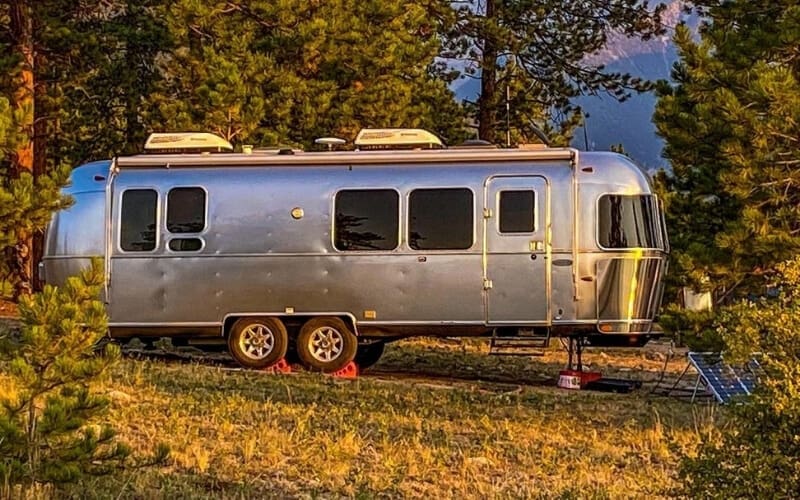
What’s an RV leveling block?
RV leveling blocks usually look like some sort of ramp that you drive your tires up onto in order to obtain a perfect level from side-to-side and front-to-back.
Some of them are manufactured ramps and others are stacks of blocks that must be assembled into a ramp at your desired height.
In the old days, wood and concrete were popular materials used to level RVs, travel trailers, 5th wheels, and truck campers.
But the porous nature of those materials makes them less durable and more susceptible to cracking or splitting than the plastic and resin blocks that you’ll find on the market these days.
These leveling blocks are also compact and easy to store underneath your RV and most of them allow you to lift your RV up to several different heights.
This makes them more adaptable to a wide variety of campsites and parking areas.
Why do you need to level your RV?
Aside from the obvious reason that it’s annoying to try to walk around inside an RV that isn’t level, there are also some very practical reasons why you need to level your RV every time you park at a new campground.
For starters, a level RV is essential to the proper functioning of many of your RV’s critical systems.
This is especially true for your plumbing, which can easily back up or become clogged if your rig is slanted in the wrong direction.
Leveling your RV is also important for RVs with slide-outs because operating those mechanical parts when your RV isn’t level can cause irreparable damage to the motor and other parts of the mechanical assembly.
If your RV isn’t level, the digital readings for your freshwater, grey water, and black water tanks also won’t be accurate.
This can cause you to overfill your tanks because your gauges are reading ¾ instead of Full.
And, finally, leveling your RV can also help you sleep better and enjoy more comfort inside your RV.
This is because a level RV will wobble less in high winds and also when you’re just walking around inside.
How do you use a leveling block?
Using your new set of RV levelers properly is essential to maintaining their integrity for years to come.
So let’s begin by outlining the general process that you can use for setting up and getting your RV on top of most RV leveling blocks.
Step 1: Pull Into Your Campsite and Park
Your first step when using RV leveling blocks is to pull your RV into your campsite (forward or backward depending on your preference) and assess just how level it already is.
Try to park as close to your RV’s final resting spot as possible and remember to engage your parking brake to keep your rig from rolling out of place.
If you’re staying in a traditional campground, you’ll probably need to use fewer blocks than if you’re setting up on a sloped beach or more off-grid parking area. But every spot is different!
Step 2: Assess Level and Check For Objects In The Way
Before you even take your leveling system out from underneath your RV, you’ll need to assess your parking spot or campsite to determine where you need to place blocks.
This is why most RVs are equipped with a small square level that can be seen from the driver’s chair.
Check that level to see whether you need to raise the front, back, left, or right side of your rig.
When you’re making your assessment, it’s also a good idea to walk around your entire RV and look closely at any trees or low-hanging branches that your rig might hit if it’s raised up by a few inches on one side or the other.
This might impact how far you pull into your site or whether you decide to pull closer to one side of the pad or the other.
Step 3: Get Your Blocks Ready
From there, you can pull your blocks out from underneath your RV and prepare them.
If your RV’s tires are already sitting exactly where you’ll want them, you can set your blocks up just to the outside of your tires. Line them up with the center of your tires to ensure proper placement.
During this step, you’ll also want to double-check that any slide-outs you may have opened are closed again, because you’ll need to move your RV once more to get up onto your blocks And you never want to move an RV with slide-outs open.
Step 4: Roll Your RV Forward
With your slide-outs (and stairs!) in and your blocks set to your desired height on the outsides of your tires, you can now pull your RV forward.
You don’t need to go far during this step, but your goal should be to roll forward just far enough so that you can then push or slide your blocks in directly behind your tires.
For most RVs, it’s easier to reverse onto blocks than it is to pull forward onto them. This is why we recommend rolling your RV forward (instead of backwards) during this step.
You’ll also do well to avoid turning the wheel of your RV while you’re also in the process of pulling up onto blocks because this can cause the blocks to slip out from underneath your wheels in extreme cases.
Step 5: Pull Onto Blocks
Now it’s time to pull your RV gently up onto your blocks and the best way to do this is to have a spotter outside of your RV to help guide you.
Depending on your setup, you’ll probably need to open your driver or passenger side window so that you can more reliably communicate with your spotter.
For longer RVs, it might also be helpful to open the side door of your RV and leave the screen door open for easier communication between driver and spotter.
You’ll want to go slow and steady when pulling up onto leveling blocks because the last thing you want to do is to pull too far past the blocks and have your tires fall straight back down to the ground.
This is why many RV drivers will actually use both feet when pulling their rigs up onto blocks.
Having one foot on the gas and the other prepared to depress the brake will minimize the time it takes to go from one to the other.
For the best results (and minimal wear on your RV tires), you’ll want to make sure your tires are centered on the desired block level.
If you’re using something like a tri-leveler, for example, you’ll want your tires centered on either the first, second, or third level of the blocks.
Leaving your tires between levels increases pressure on the tire itself and also increases the likelihood of your RV shifting as you’re moving around inside.
Step 6: Engage Parking Brake and/or Set Chocks
Once your spotter tells you that your tires are centered on your blocks all the way around your RV, you’ll want to depress your emergency brake and set a tire chock in front of any tire you’ve lifted.
This will prevent your RV or travel trailer from rolling out of position once you take your foot off the brake.
Step 7: Unhitch and Extend Jacks
If you’re leveling a travel trailer or 5th wheel, it’s only after setting chocks in place on both sets of tires that you should consider unhooking your trailer from your towing vehicle.
And it’s always a good idea to raise the trailer coupler off your vehicle’s hitch ball before removing the safety chains.
This is a good fail-safe to keep your trailer connected to your vehicle to ensure that it doesn’t shift at all when unhooked.
If your rig is equipped with stabilizer jacks, you should also extend all of them to further reduce sway and wobble while your RV is parked.
From here, you’re ready to get back to enjoying your campground and you’ll simply need to reverse these steps when you’re ready to move your recreational vehicle again.
RV Leveling Blocks For leveling your Campers in 2023
While some of these RV leveler choices are ‘one-size-fits-all’ options, others have very specific purposes.
So, be sure to look at each set of leveling blocks closely so that you have a better idea of which models might work best for you before reading through our Buying Guide.
RV leveling blocks are most often made to both stabilize your RV and level it out, Here are our top 6 picks for the best RV leveling blocks:
1. Best Overall Leveling Blocks: Camco 44510 Heavy Duty 10 Pack Leveling Blocks
We’ve chosen the Camco 44510 Heavy Duty Leveling Blocks as the best overall because of their versatility and durability.
This is actually a set of 10 interlocking blocks that can be set up to your desired height depending on the needs of your varying campsites.
These levelers are ideal for leveling single and dual-wheeled RVs, travel trailers, and 5th wheels.
And they can even be useful for leveling a truck with a small utility trailer or pop-up camper if desired.
The solid bottom of these blocks keeps them from sinking too far into soft ground or mud.
This also makes them useful for distributing weight underneath hydraulic leveling jacks on more modern recreational vehicles.
Each block in this ten-pack measures 8.5” L x 8.5” W x 1” H. But, when interlocked, each block will only raise the level of the entire stack by half-an-inch.
But the resin used to construct these blocks is UV-stabilized for added durability and the entire set comes with a zippered storage bag with its own handle, which allows for easier transportation and more secure, protected storage.
Things We Like
Things We Don’t Like
2. Best ‘Different’ Leveler: BAL 28050 Light Trailer Tire Leveler
This leveler is a bit different than the other designs that you’ll find above and below. But the BAL 28050 Light Trailer
Tire Leveler is a ratcheting-style leveler that doesn’t require you to pull your RV or travel trailer onto a set of interlocking blocks or a ramp-style leveler.
Instead, you’ll slide this leveler around your tire and then you’ll be able to raise the tire itself to your desired height.
To do so, it utilizes a ratchet wrench to turn a drive screw that raises the tire lifting pads until your rig is sufficiently level.
And, don’t worry, it does come with the appropriate ratchet wrench for the job!
This leveler is designed to fit all 13” and 14” wheels, and it will also accommodate most 15” RV wheels.
But it is worth mentioning that you’ll need to purchase one of these for each of the tires you need to adjust when you get to a new campsite.
The distance on this leveler from the two plates at the bottom measures 12 inches. And the distance between the plates at the top measures 20.25 inches.
The exterior of the leveler also includes a corrosion-resistant finish to increase its overall lifespan.
Things We Like
Things We Don’t Like
3. Most Durable: Andersen 3604 Precise Camper Leveler
For those of you with larger recreational vehicles, there’s arguably not a more durable set of RV leveling blocks out there than the Andersen Camper Leveler 3604.
It’s rated to hold rigs up to 30,000 pounds and it getting up onto it is a simple process.
You’ll just need to set the leveling block behind or in front of your RV tires and then pull onto it to your desired level.
You’ll be able to adjust that level to any level between 0.5 inches and four inches, but you won’t be able to raise your rig higher than four inches with this model.
But it also comes with a wheel chock to help you keep your rig from rolling once you have it at your desired level and you take your foot off the brake.
And instead of having steps that limit exactly how precise you can get with the level of your RV, this design allows you to get your RV perfectly level every time.
Because of its slight limitation on height, you might find this to be a better solution for leveling your RV in developed campgrounds or rest stops.
But it does offer a much simpler set up and breakdown process than many of the other solutions out there.
Things We Like
Things We Don’t Like
4. Easy To Use: Andersen 3604 Precise Camper Leveler
In terms of ease of use and adaptability, the Tri-Lynx 00015 Lynx Levelers are right up there with the Camco Heavy Duty Leveling Blocks.
These blocks are also great for interlocking directly under your RV tires or providing a more stable platform for hydraulic or manual leveling jacks on newer rigs or travel trailers.
It’s also a ten-pack of interlocking blocks that each measure 8.5” L x 8.5” W x 1.5” H.
This extra height allows you to gain a true, full inch lift every time you stack a new block on top of another, which is a slight benefit over the Camco design.
These blocks are also rated to hold up to 40,000 pounds and they feature a modular design that allows you to configure them in a variety of formations.
While they manufacturer recommend a pyramid-style design for maximum stability and strength, you can also use these blocks to create your own step-up, ramp-style leveler for your RV tires.
Because it’s a ten-pack, this can also be used as a standalone solution for leveling all of the tires on your rig.
Unless you really need to raise the level of one side of your RV by more than about eight inches, you won’t need to purchase more than one set of these blocks.
Things We Like
Things We Don’t Like
5. Best Single Leveler: Camco 44573 Yellow Drive On Tri-Leveler
If you’re just searching for a single leveler to replace an existing model (or you only frequent mostly level RV sites), then check out the Camco Yellow Drive On Tri-Leveler.
It features three leveling platforms and the highest can raise your tires up to 3-⅞ inches off the ground.
This leveler is rated to hold up to 3,500 pounds and it includes a convenient carry handle on the back.
This handle makes it easier to store underneath your RV and slide into place behind your RV tire with minimal effort.
The tri-leveler is made of a lightweight resin and the top is finished with a non-slip surface to prevent your tires from shifting once you’ve set it up.
And, for your storage purposes, the entire tri-leveler measures 22” L x 8” W x 5” T.
Things We Like
Things We Don’t Like
6. Hopkins Towing Endurance Leveling System: Hopkins 08200 RV Leveling System
If you’re interested in an RV leveling system that combines the strength of traditional wooden blocks and more modern reinforced plastics, you might be intrigued by the innovative design of the Hopkins 08200 Endurance RV Leveling System with Wheel Chock.
To be clear, this leveling kit includes four wheel ramps, two wheel docks, one wheel chock, one non-skid traction mat, and the required assembly hardware.
But you will need to purchase several pieces of additional lumber and assemble the leveling blocks each time you arrive at a new campsite.
If you’re willing to do that little bit of extra work, however, this leveling system will raise your RV tires by two inch increments and the included chock will help you keep your rig in place before you let your foot off the brake.
The anti-skid traction mat that comes with this system is useful for preventing the blocks themselves from sliding once the weight of your RV tires hits them.
And this mat can also double up as a carrying handle when you’re initially setting your blocks in place.
Things We Like
Things We Don’t Like
Buying Guide of rV leveling blocks in 2023
So, there they are! You now have six excellent options to choose from that will help you conquer uneven ground wherever your RV takes you.
But how do you know which one is the right fit for your RV and your traveling style?
Don’t worry! We’ll answer that question (and probably a few others) in this RV Leveling Blocks Buying Guide!
Block Types
To kick things off with more clarity, we think it’s important for you to understand that there are several different types of RV leveling blocks to choose from.
So, let’s begin by defining these types and discussing some of their unique advantages and disadvantages.
Interlocking Blocks
Interlocking RV levelers are arguably the most basic type. They appear to be square plastic tiles that stack as high (or as low) as you need them to go.
Some folks say they look like Lego blocks, and there’s actually some similarity to Legos in the way they are used as well.
These blocks usually come in a stack of, say, 10 blocks or more. But you won’t typically place five behind one tire and five behind the other.
These blocks allow you to step your RV up to your desired height by building your own ramp.
For example, you can place one block directly behind your tire, two blocks behind that first one, and another four blocks behind those two.
As you can see, this will help you get your RV up to the desired height without trying to get your tires from the ground up to that level in one big jump.
The major benefit of interlocking blocks is the ability to customize them based on the ground at different RV sites.
And we’ve also found these blocks to be useful in leveling other things around your campsites, such as a picnic table or barbeque grill.
Most of these blocks are between one and two inches tall on their own. But one of their downsides is that they only increase the total height by about half-an-inch when they’re stacked together.
Depending on the exact model you choose, these blocks can also support a typical range of trailer weights between 3,000 and 10,000 pounds.
Ramp Levelers
Ramp-style leveling blocks aren’t stackable like interlocking blocks. But they do have multiple levels that allow you to back your RV onto them to the desired height.
Most ramp levelers have three different heights that step up gradually the further you get onto them.
While these ramp levelers take a little less time to set up than interlocking blocks, they only allow you to raise your RV up to its highest level.
And because many of these levelers are made of rigid plastic material, some of them tend to slip or slide when your RV tires first make contact with them.
Those are the two main downfalls of ramp levelers, but the latter issue can be fixed by placing a small rubber mat underneath the leveling blocks before pulling your RV up onto them.
It’s also recommended to get a quality pair of RV wheel chocks to make sure that your wheels remain in place once you’ve settled your RV onto the blocks at the desired level.
Inflatable Levelers
To the naked eye, inflatable levelers really don’t look like much until you put them into use.
They are essentially small, flat air bags that are designed to be placed under your RV tires at the exact location where you want to level your rig.
This means that you’ll either need to place the deflated airbags behind or in front of your tires before rolling onto them.
From there, these levelers require a standard tire inflation pump to add air into them until you’re satisfied with the level of your RV.
As you might imagine, there aren’t too many RVers out there that swear by this style of leveler.
And that’s primarily because they tend to make your rig feel shaky and unstable when you’re walking around inside.
The other problem with inflatable levelers is that they seem to work best when inflated to their maximum capacity.
This minimizes the amount of flexibility you have to make micro-adjustments with this style of leveler.
Electric Levelers
It’s nearly impossible to argue against electric levelers when it comes to ease of use.
As you might imagine, these levelers offer a very simple (and effortless) push-button operation that levels your RV in a matter of seconds.
These levelers also allow you to raise your RV up to variable heights depending on just how uneven your campsite is.
But the major downside of these electric levelers is their added cost. These are easily the most expensive type of RV levelers.
In fact, some of the complete systems out there cost more than $2,000 before you even factor in the cost of installation.
Maximum Weight Capacity
The good news about most leveling block manufacturers is that they aren’t shy about advertising the maximum load capacity of their levelers.
But the tricky part comes when you’re trying to determine just how much weight will be placed on the blocks with your specific rig.
And you’ll need to remember that the front of your RV has a different weight than the rear of your rig.
It’s also important not to use the total weight of your vehicle when you’re trying to find a set of leveling blocks that can hold it.
For example, a 20,000-pound RV doesn’t necessarily need a leveling block for each tire that’s rated for 20,000 pounds.
That’s because all of the weight of your RV is rarely going to be resting on just one tire (if it is, we’re going to go out on a limb and say you’re probably doing something wrong!).
Instead, the weight is going to be spread out amongst all of your RV’s tires, which can be four, six, or even eight tires depending on the size and design of your rig.
Now that you’re aware that your RV’s weight is spread out amongst all of its tires, the challenge is to find out how much weight really rests on each tire.
From there, you’ll need to find leveling blocks that are rated for at least 20% more weight than what you expect to be resting on your tires.
Instead of paying attention to your RV’s gross vehicle weight rating (GVWR), you’ll want to zero in on the two gross axle weight rating (GAWR) numbers on your RV’s manufacturing label.
You should have a front GAWR and rear GAWR listed to tell you the approximate weight limit that each axle is rated to handle.
From there, divide those numbers by two to get a better understanding of how much weight you might be placing on the leveling blocks that you set under each tire.
If you multiply that number by 0.2 and then add the result to the original number, you’ll have a safe threshold to use when searching for leveling blocks with an acceptable load capacity for your RV.
Durability
As someone who has seen how quickly leveling blocks under an RV can deteriorate, I’d advise you not to go too cheap when you’re evaluating the durability of a given set of blocks.
In making this evaluation, you should mainly be looking at the type, thickness, and construction of the material used for any given set of leveling blocks.
For example, many blocks are made of a rigid plastic material, but the thickness of that material can vary greatly.
As you can probably imagine, a thicker material is going to handle a higher weight capacity and last longer than thinner levelers. But the structure of the blocks will also come into play.
With a design like the Camco Heavy-Duty Leveling Blocks, for example, the weight placed on top of the block will be more evenly spread over the entire bottom of the block.
This reduces the amount of stress placed on a single edge and reduces the likelihood of any edges cracking or splitting.
Other designs with higher edges or a design that doesn’t distribute the weight as evenly will be more likely to crack or split under the weight of your RV.
In addition, your ideal blocks with also be finished with some kind of UV-resistant treatment to limit the effects of the sun’s radiation over the lifetime of the blocks.
Because it can be hard to evaluate the true durability of a set of RV leveling blocks before purchasing, it’s also a good practice to read through customer reviews for each set of levelers you’re interested in.
This will help you determine what kinds of RVs can be supported by a given set of blocks and help you understand how long you can reasonably expect that set of blocks to last when used properly.
Ease of Use
The amount of effort (or lack thereof) required to set up your new leveling blocks should also be considered before you finalize your purchase.
After all, the last thing you want is for yoru blocks to require a long setup process when you arrive at a new campground after dark.
For our money, interlocking levelers tend to require a little more work because it can take some time for you to get used to eyeballing how many blocks you’ll need to use to level your rig from front-to-back or side-to-side.
That said, they do tend to offer the most flexibility in terms of different heights.
On the other hand, something like Camco Drive On Tri-Leveler is very easy to use because it simply requires you to place it behind or in front of your RV tires and then drive onto it.
The downside of this leveler, however, is that it only offers three heights for you to raise your RV up onto.
Additionally, you’ll also need to consider how you’ll store and protect your RV leveling system from damage when you’re transporting them.
That’s why it can be beneficial to choose a model that comes with its own storage bag or sack to keep everything contained and protected from dust, moisture, and impacts when stored underneath your RV.
Warranty Coverage
You may also choose to look into the warranty coverage on a given leveling system before setting on it.
If you’re doing most of your product purchasing on Amazon these days, however, you’ll probably need to pop over to the manufacturer’s website to get the most accurate information on their warranty policies.
While it’s rare for the makers of RV leveling blocks to offer long, extended warranties on their products, most should offer a year or two of warranty coverage on defective leveling blocks.
This coverage should replace any blocks that crack or split too quickly when used properly.
However, there can be many loopholes that manufacturers use to avoid replacing a set of blocks that are broken or damaged quickly after you purchase them.
That’s why you should really be familiar with a company’s policies before buying.
And, in addition, some products may not automatically be registered for warranty coverage with the manufacturer when they are purchased.
This can especially be true if you buy a set of leveling blocks through a third-party provider (like Amazon or Camping World).
This simply means you’ll need to go on the manufacturer’s website with your product’s identification number and register for warranty coverage, but it does require an extra step to make sure you’re covered.
And this is something you’ll want to know you need to do before you purchase a new set of RV levelers.
Price
At the end of the day, many of our decisions to buy new RV accessories is going to come down to the bottom line.
The good news about this particular RV supply is that it’s far more affordable than some of the other essential add-ons for comfortable RV living.
You’ll find that the leveling block models we’ve reviewed above range from less than $20 up to more than $110.
But, if you’re looking for a set of blocks that score well for performance, durability, and affordability, we’d recommend looking for something in the $25 to $50 range.
So, Which Is Best For You?
To be honest, there are so many different RV, travel trailer, and 5th wheel designs out there these days.
And that’s not to mention pop-up and slide-in campers for trucks that may also require a quality set of RV leveling blocks.
That variety makes it a little tough to choose just one or two block models that are going to be the best fit for the majority of RV aficionados.
That being said, these are the two RV levelers that stood out to us the most:
If you need a set of leveling blocks to supplement the hydraulic jacks on your newer RV, we’d recommend the Camco 44510 Heavy Duty Leveling Blocks.
These blocks can either be placed directly under your tires or under your hydraulic jacks themselves to keep them from sinking into mud or soft dirt.
They also allow for more customized heights and interlocking arrangements than most other leveling systems.
And for those of you working hard to maintain the shine and integrity of an older RV, the Hopkins 08200 Endurance Leveling System with Wheel Chocks is arguably the most complete RV leveling solution on our list.
It combines wood and reinforced plastic to provide exceptional durability and it’s designed to work with all classes of RVs, travel trailers, 5th wheels, and even truck campers.
Frequently Asked Questions
If you’ve ever spent any time living or vacationing in an RV park, you’ve probably witnessed a couple yelling at each other through the RV screen door as they tried to get their rig up onto their leveling blocks.
There’s more to using and maintaining these blocks than simply buying them and sliding them under your RV.
In this Frequently Asked Questions section, we’ll answer some of the common conundrums about leveling blocks so that you can make the most of your new purchase.
How many leveling blocks do I need?
Ideally, you should have a set of leveling blocks for each of your RV’s tires.
This means a minimum of four blocks, but keep in mind that some RVs have more than four tires and it’s really best not to leave any tires suspended with nothing but air underneath them when you level your RV.
While you might not always have to put blocks under each of your tires, it’s better to be prepared and have the ability to do so than to be stuck with the inability to properly level your rig.
And the amount of blocks you need will also depend on the type of campgrounds or parking spaces you frequent.
For those of you that prefer more remote, off-grid camping locations, for example, having more leveling blocks will help you deal with the more uneven surfaces that you’ll be camping on.
But for RVers that stick to developed campgrounds, you’ll probably be fine with having at least one leveling block for each tire.
What are the best RV leveling block brands?
As you might imagine from our selections above, Camco is one of the most well-known and highly-trusted manufacturers of RV leveling blocks.
And, indeed, they make a wide selection of great RV supplies and accessories. Aside from Camco, however, leveling blocks from companies like Tri-Lynx and Andersen Campers have also received great reviews from users.
What’s the best way to store RV levelers?
The best way to store your RV levelers is in some type of bag in your rig’s underneath storage compartments.
While the plastic material that most of these blocks are made of isn’t susceptible to mold, mildew, and corrosion, storing your levelers in a bag will keep them from moving around while you’re driving and it will also make them easier to grab out of your RV when it’s time to set up at a new campsite.
How high can I stack these blocks?
Again, this depends on the type of blocks you purchase. If you opt for a tri-leveler or ramp-style leveler, for example, you won’t be able to stack them at all.
But the case is a little different for interlocking leveling blocks, of course.
If you choose this type of RV leveling blocks, you can safely stack them five or six blocks high as long as you have enough blocks to gradually step your RV’s tires up onto the highest stack.
Conclusion
If you don’t think you’ll need leveling blocks for your RV, we can most certainly promise you that you are mistaken.
You can never really know when you’ll need to adjust the level of your rig and, when that time comes, you don’t want to be in a position to have to jury-rig a less-than-safe solution.
Fortunately, you now have several options for quality sets of RV leveling blocks to choose from.
And you should also know exactly what to look for to find the best match for your RV and your style of RV living.
As always, we hope you’ve enjoyed the product reviews and purchasing insights we’ve shared with you here today.
And we wish you the best of luck on all of your upcoming RV adventures with your new set of RV levelers!

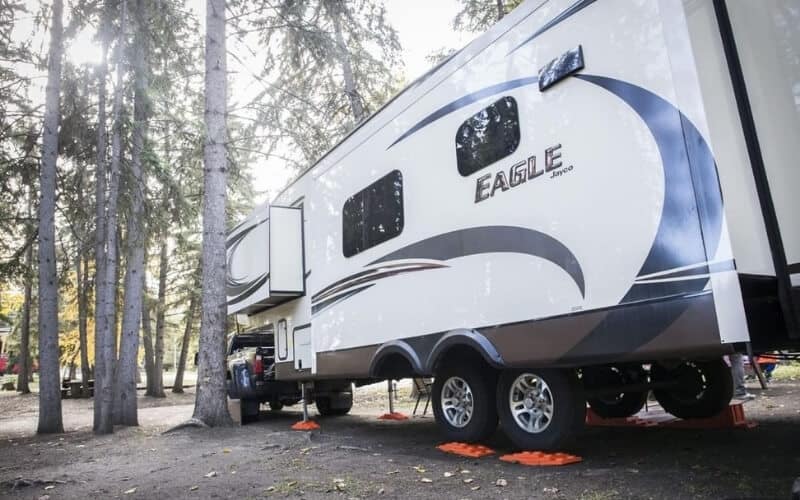







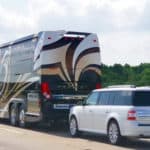
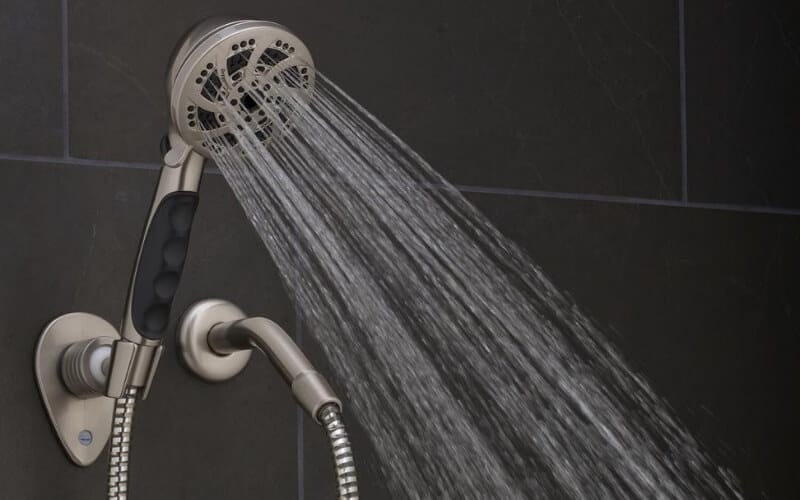

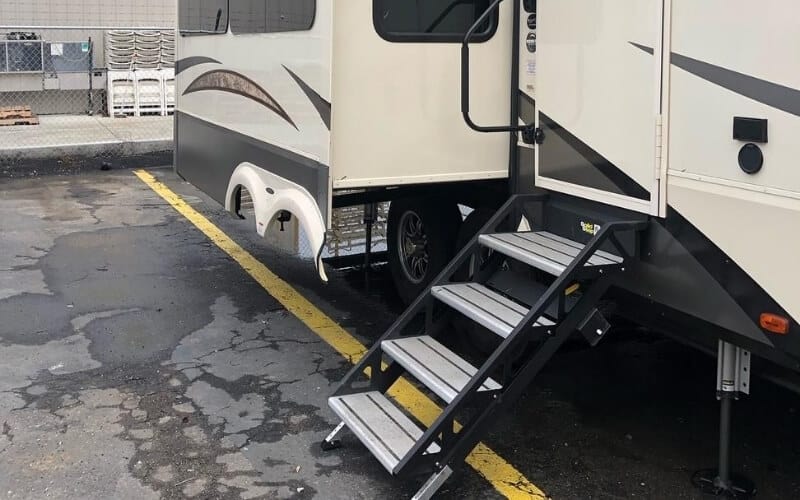
3 Comments
Dalton Bourne
3 years agoThis Camco T Level 25543 is fantastic!!I use it on our 5th wheel. You just need to know where the center of your camper is. I put it on the floor and turned it on, and it will let you know which side is not level. It’s compact and can be installed anywhere, and it allows for front-to-back and side-to-side leveling systems in one unit. Another incredible thing about this product is its price tag. I didn’t even need to allot a special budget just to have this RV level in my possession.
Bruno John
2 years agoPerfect for a travel trailer! I’ve bought two sets of RV leveling blocks from Camco so I can put them under my leveling jacks all the way around when on grass. They hold up to my 9,000 lb trailer when driving. In addition, I love that it has an interlocking design and doesn’t slip like other levelers.
Cyrus Juliet
2 years agoThank you for recommend these product. I bought these Camco leveling blocks, expecting that they offer excellent features.